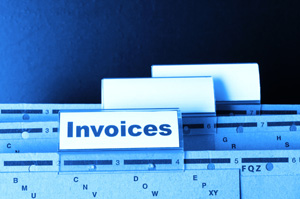Having never considered buying a franchise, I suddenly find myself a partner in one. This comes as a bit of a surprise to me. Elsewhere on this website I've endorsed the benefit of buying a franchise as a startup. But I never seriously thought I would take that route myself.
Yet, here I am, neck deep in learning a new business. In a moment I'll explain how this came about. But first, let me tell you how I want to use my little adventure as a learning experience for my readers.
An Invitation to Look Over our Shoulders
Over the next few months, as we get the franchise up and running, I'll use this blog to take you behind the scenes of what were doing. You will be able to look over our shoulders as we build the business. I'll show you the problems that we encounter, the mistakes that we make, and (hopefully) the successes that we achieve.
Many of my readers are seriously considering a franchise for themselves. If you're one of them — of even if you're only toying with the possibility of buying a franchise — you will find this series instructive. It will detail the process of finding, buying, and starting a franchise.
In effect, you will learn the ins and outs of franchising by tagging along with us. At this point I have no idea how often I will be blogging about our endeavor. My goal, however, is to post whenever we pass a new milestone and every time that some notable development occurs, good or bad.
I intend to offer you the unvarnished truth about our experience, except for one thing. I'm not going to share the name of the franchisor, at least not yet. I may do so at the end. But for now I will simply refer to the franchisor as Parent Company, Inc.
Parent Company Inc. has been franchising businesses for decades, with an exceptional success record. They franchise a variety of brand names globally, all of them related to particular services for maintaining homes and automobiles.
My Venture into Becoming a Franchisee
So how did I become connected with Parent Company, Inc.? It began with my nephew and his wife. They developed an interest in one of the company's brands. They spent weeks checking out the franchisor, visited the corporate headquarters at length, and in the end were awarded a franchise.
However, their franchise award was conditioned on them finding a business partner who could bring a stronger personal balance sheet to the business. Because I had helped them finance another business which they own, they turned to me again.
I spent two weeks doing my own due diligence on Parent Company Inc., then spent a day with my nephew at one of the company's orientation sessions. After I found satisfactory answers to my most crucial questions, I agreed to become a partner in the startup.
We're meeting later today to start laying out our business and financing plans. I'll keep you posted on how the planning unfolds. Meanwhile I'll devote some early blogs in this series to the preliminary steps that brought us to this point. That way you can see what the franchising experience is like from the very beginning.


 Please note that these are the prospective customer’s hot button issues. Not your own. That's why the first step in marketing is to know your prospective customer well.
Please note that these are the prospective customer’s hot button issues. Not your own. That's why the first step in marketing is to know your prospective customer well.


